 |
|||||||||||||||
Even though the Inconel-X outer skin of the X-15 was initially made to embrace the heat experienced at hypersonic velocities, pushing this to the planned Mach 8 speeds envisioned for the advanced X-15A-2 was too much for even this nickel alloy. Instead a new method of protection needed to be found. This came in the guise of an ablator from Martin called MA-25S. It supposedly had the advantage of being easily applied to the X-15 skin via spray-on methods, and could just as easily be touched up after a mission by using the spray to fix any flaws. In practice, none of this worked as advertised, and is a primary reason why the later Space Shuttle program went with thermal protection ceramic tiles to protect the Orbiters from the tremendous heat of re-entry. |
||
— Applying the Ablative to the X-15A-2 — |
||
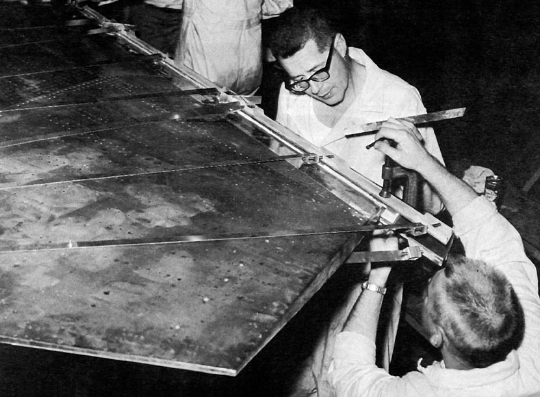 |
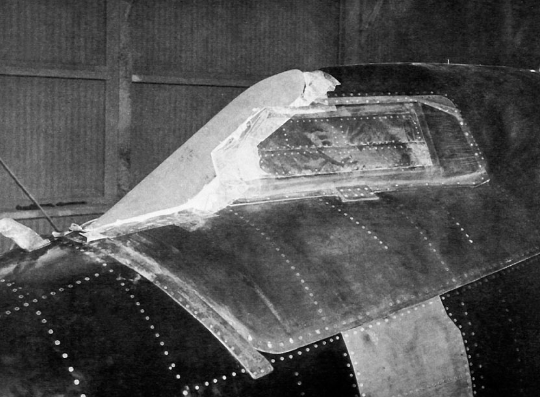 |
|||
The leading edge of the wings, tail, and the cockpit canopy all required special application with a more resiliant material since these areas experienced the highest heat load. This is similar to the idea used on the Space Shuttle of a reinforced carbon-carbon material on the leading edge of the Orbiter's wings instead of the thermal tiles and blankets. Bill Albrecht collection |
||
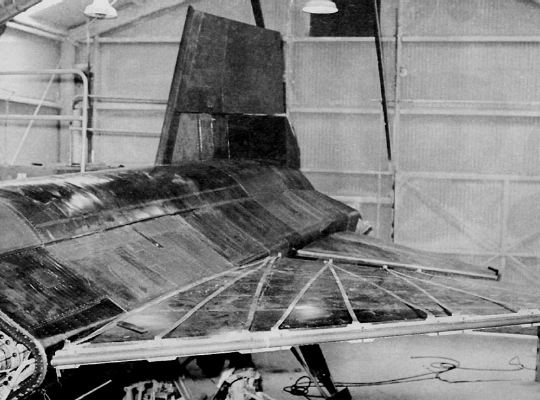 |
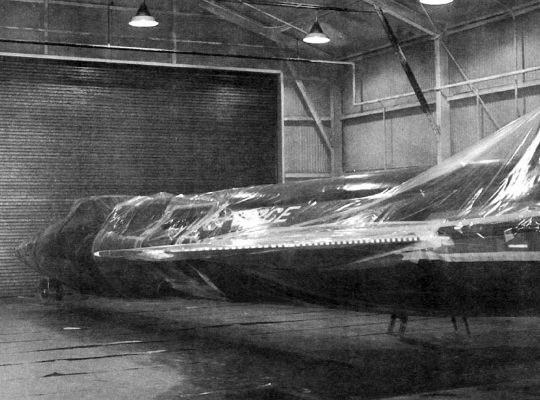 |
|||
The rest of the aircraft surfaces are prepared for the spray-on ablator. Bill Albrecht collection |
The X-15A-2 is wrapped in plastic to prevent contamination while not being worked on. Bill Albrecht collection |
|||
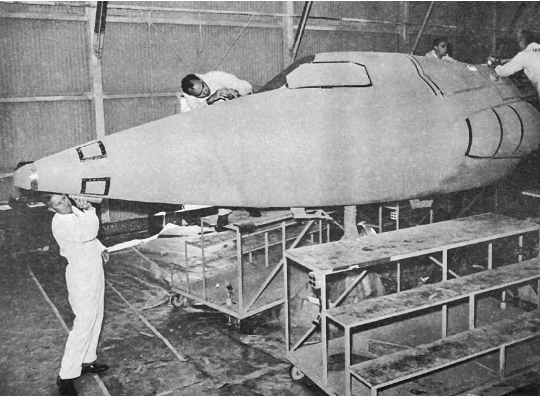 |
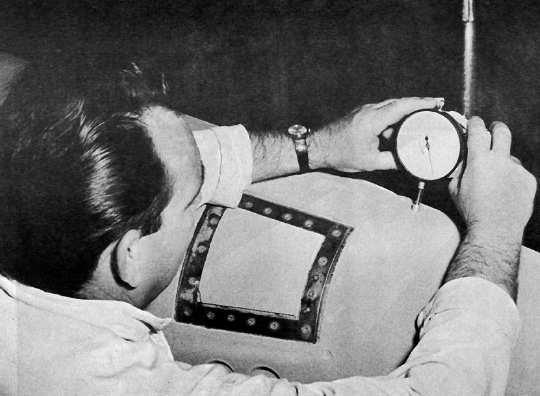 |
|||
Technicians sanded the surface of the ablator smooth, more like a work of sculpture rather than a highly-technical research aircraft program. Bill Albrecht collection |
Checking the depth of the ablator application near the nose of the aircraft. Note the panel removal screws are clear of ablator. These areas are filled in later. Bill Albrecht collection |
|||
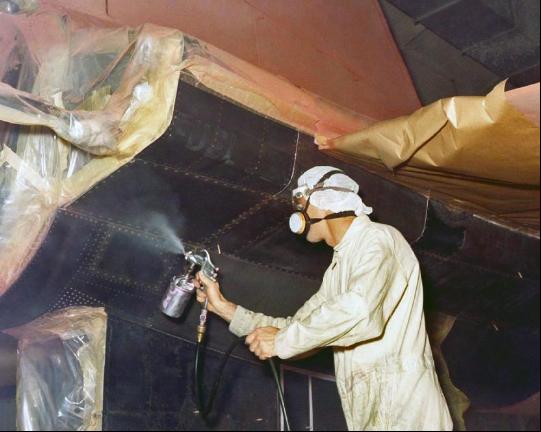 |
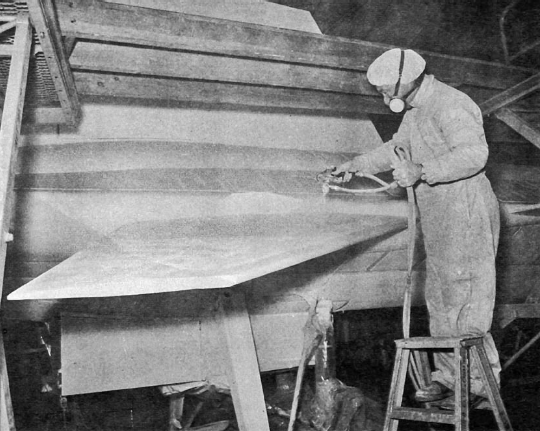 |
|||
With critical areas around the rocket engine protected by plastic, the technician uses the spraying process to apply the ablator. Edwards History Office (L) and Bill Albrecht collection (R) |
||
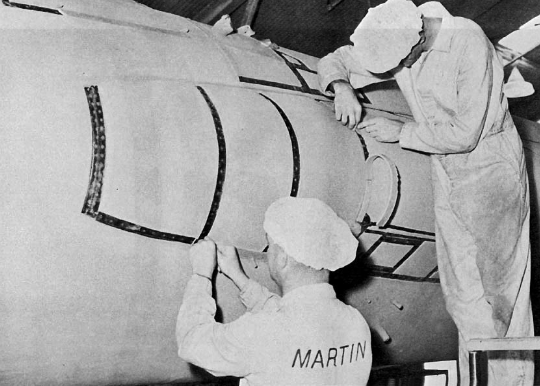 |
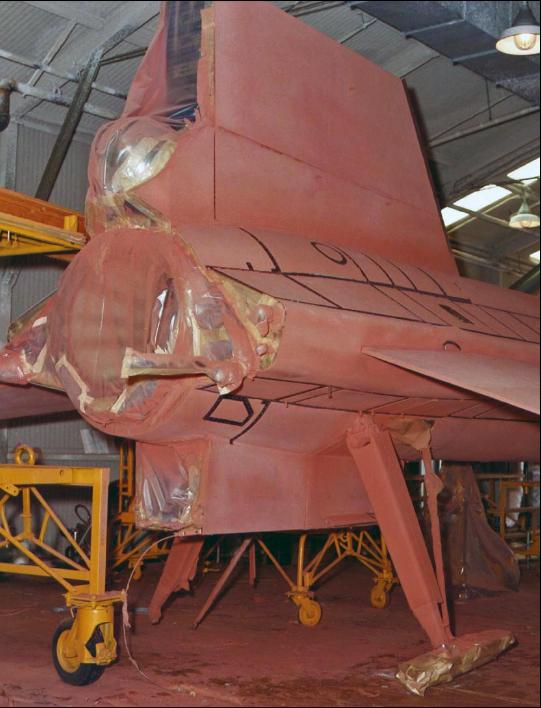 |
||||||
Technicians peel away the protection from the access panels. Bill Albrecht collection |
|||||||
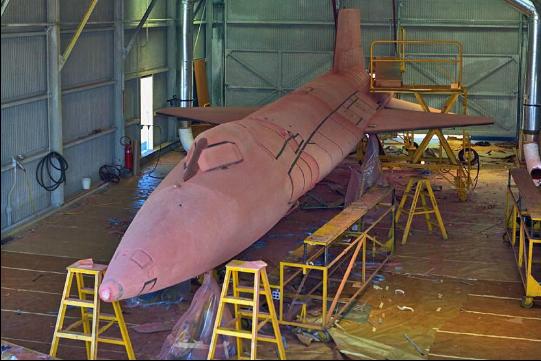 |
|||||||
The completed rear fuselage and tail surfaces with all access panels cleaned. Edwards History Office
The X-15A-2 at the completion of the ablator application. The ablator itself has the consistency, and color, of a standard pencil eraser. Edwards History Office |
|||||||
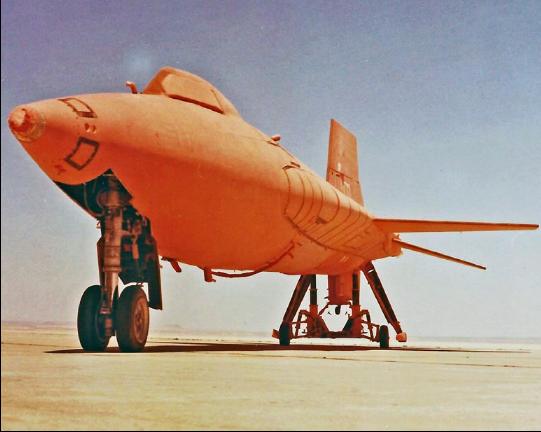 |
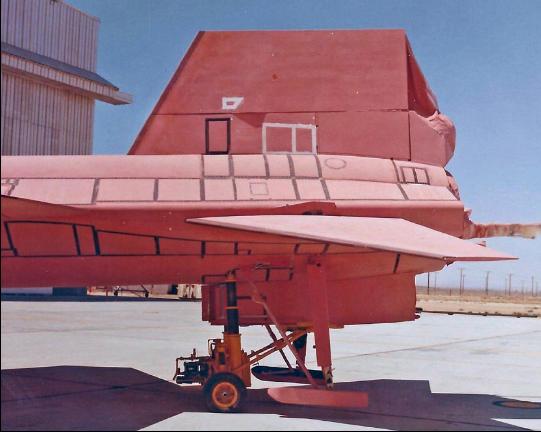 |
|||
Four views of the ablator-covered X-15A-2 when rolled out from the paint shop hangar on 21 Jun. 1967. The protective plastic is still in place over critical areas. Neil Stoddard collection |
||
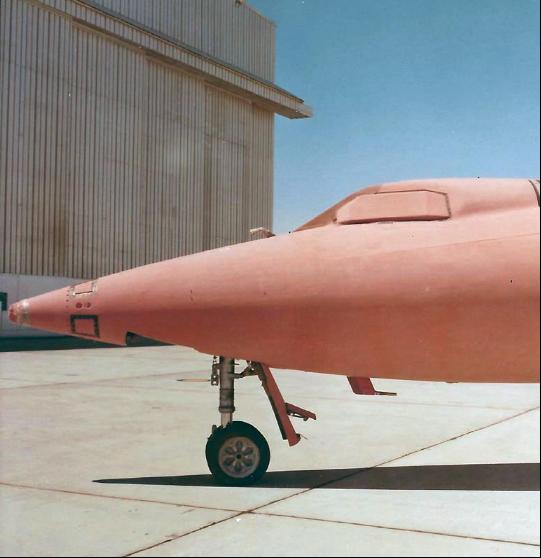 |
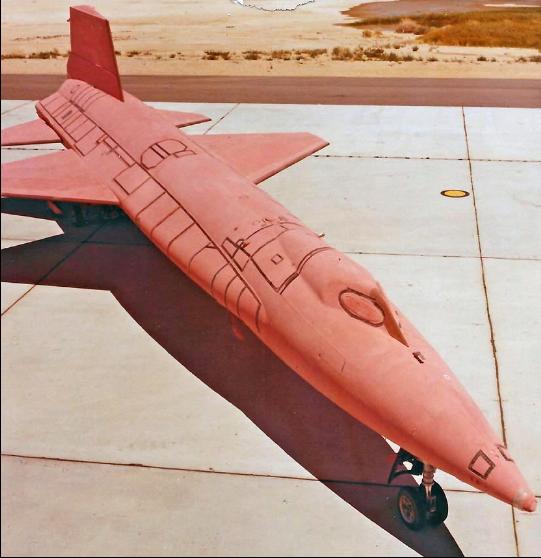 |
|||
— The Ablative-Covered X-15A-2 — |
||
With the ablator fully-applied, the process was not yet completed of protecting the X-15A-2 to the expected heat of high Mach research flights. The ablator itself is oxygen sensitive, meaning that if oxygen got into the ablator, and someone working on the vehicle dropped a tool onto the surface, it could literally explode.
In addition, Pete Knight emphatically stated in one of our interviews: “It was pink and I wasn’t going to fly a pink airplane.”
To protect against Pete's sensibilities, and the explosive nature of the ablator itself, a white outer protective layer was devised to cover all the exposed ablator surfaces. |
||
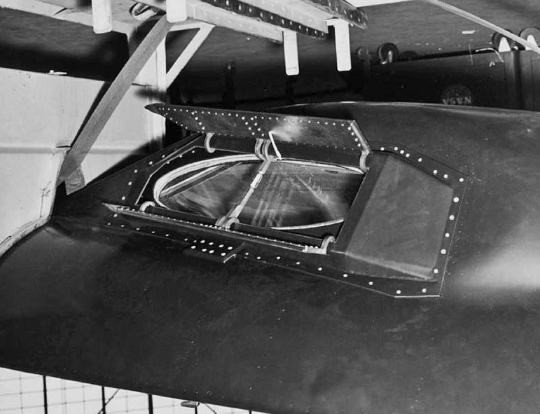 |
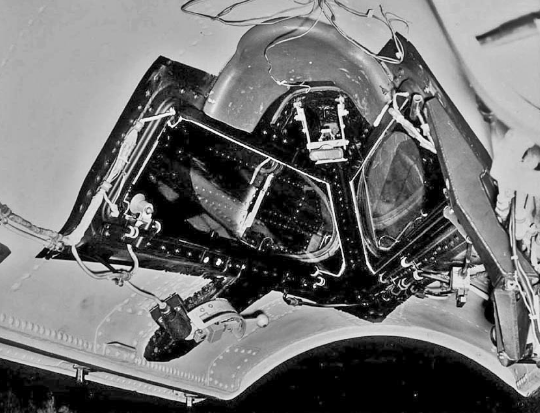 |
|||
New oval windows were installed in the X-15A-2 canopy to prevent them from cracking, as happened with the rectangular ones. An eyelid hatch was also installed over the left hand window to protect it from the ablative running during high heat flights. North American Aviation |
The inside of the new canopy shows that the rectangular window and frame was retained for the inner panel. The object at the top center is for the pilot's helmet to rest against, holding his head in place during high-g flight. North American Aviation |
|||
Note that both of the above photos have been inverted in order to show the correct orientation of the canopy. In actuality the canopy sat on a floor fixture and was upside down. |
||
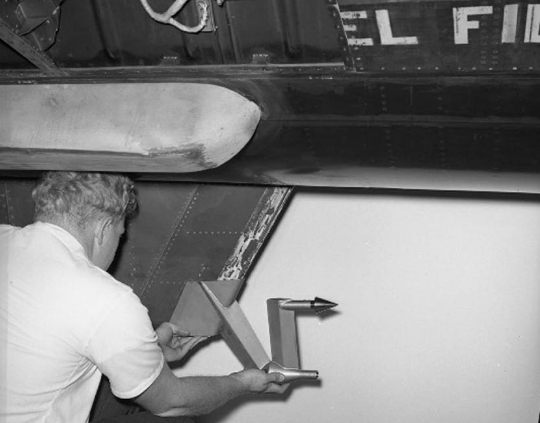 |
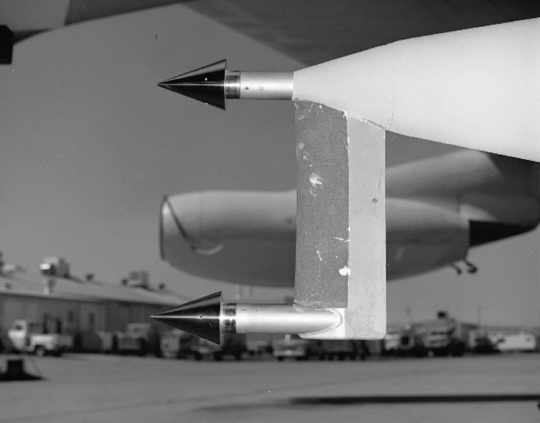 |
|||
The scramject test spike has a fit check on the lower ventral. Note the stowed landing skid covered in ablative and the access panel removed from the fuselage. Armstrong Flight Research Center |
Here is the final version of the scramject instrumentation spike fitted into place on the nose of the dummy scramjet test bed mounted under the X-15A-2, and ready for flight. Armstrong Flight Research Center |
|||
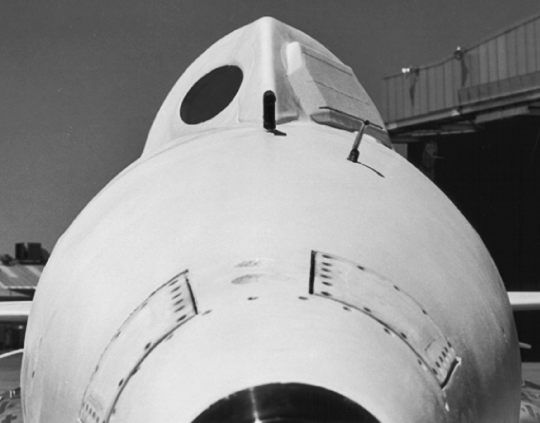 |
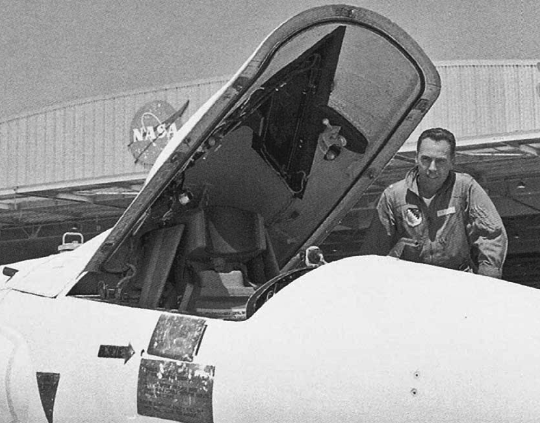 |
|||
Nose-on view of the A-2 with the protective white paint layer. Note the eyelid that covers the left side windshield, so it can be opened after re-entry for pilot visibility. Armstrong Flight Research Center |
Pete Knight checks out the A-2 cockpit after the white coating was put in place. He felt it was safe to fly once the pink ablator was properly covered. Armstrong Flight Research Center |
|||
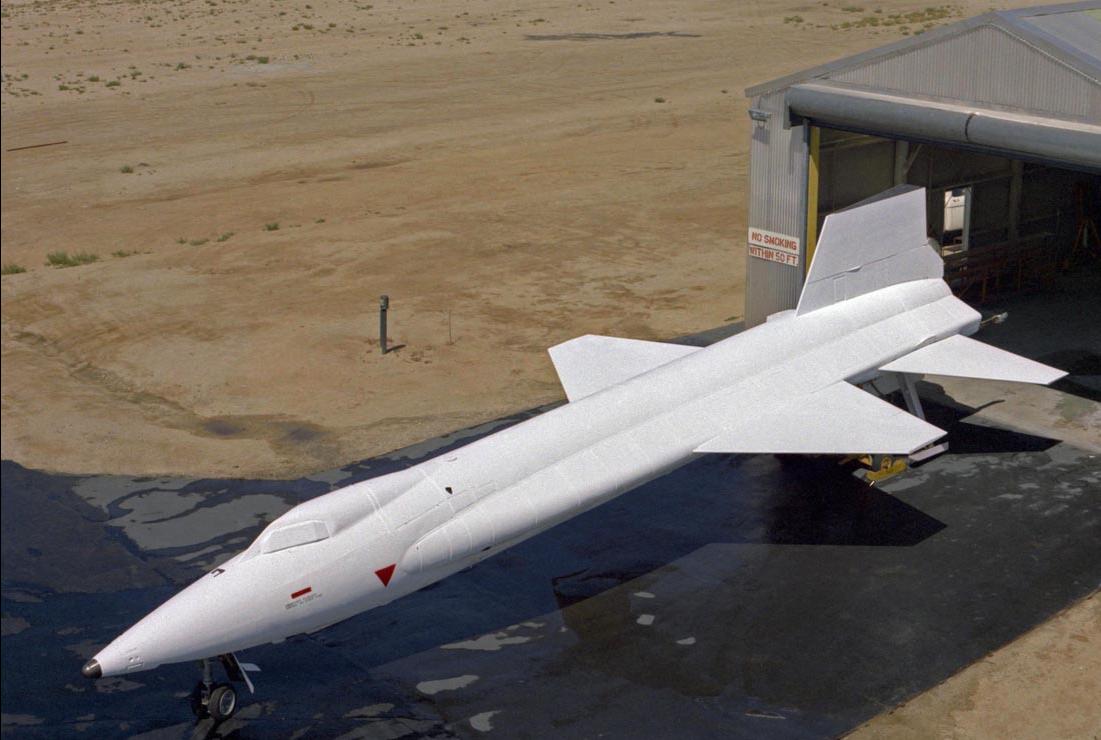 |
||
The prisitine white X-15A-2 emerges from the paint shop. This is a stark contrast to the normally black hypersonic research aircraft. Armstrong Flight Research Center |
||
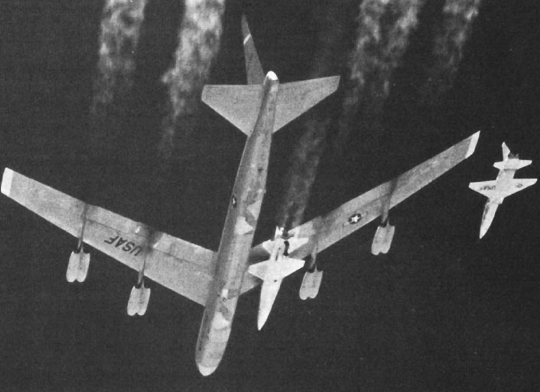 |
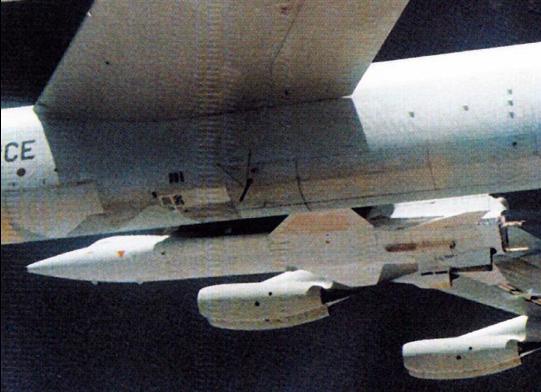 |
|||
A test flight with the ablator, but no external tanks was attempted twice on 11 and 16 Aug. 1967, but were aborted for problems. Above is Mission 2-A-95 on 16 August. Armstrong Flight Research Center |
The test flight, sans external tanks, finally took place successfully on 21 Aug. 1967. Pete Knight reached Mach 4.94 or 3,386 mph, at 91,000 feet in altitude. author's collection |
|||
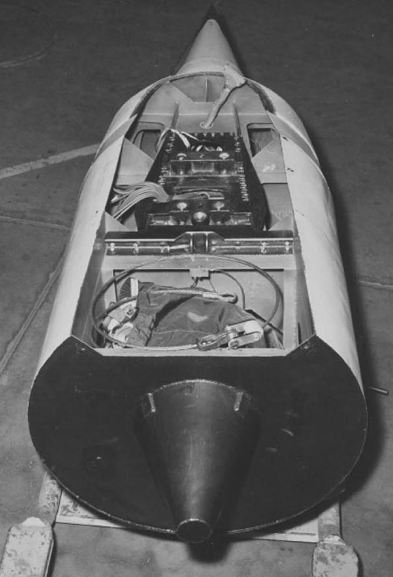 |
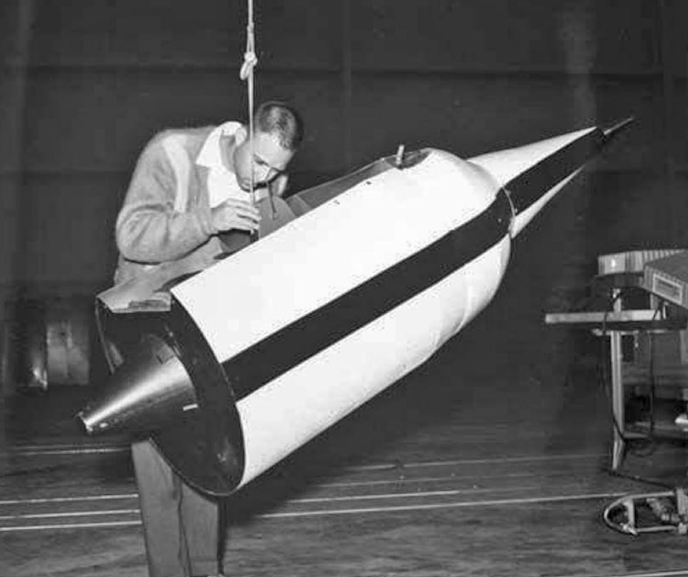 |
|||
The dummy scramjet (sans nose spike) is prepared for flight. The image at left shows the interior where the instrumentation that was used to record test data during flight can be seen. Armstrong Flight Research Center |
||
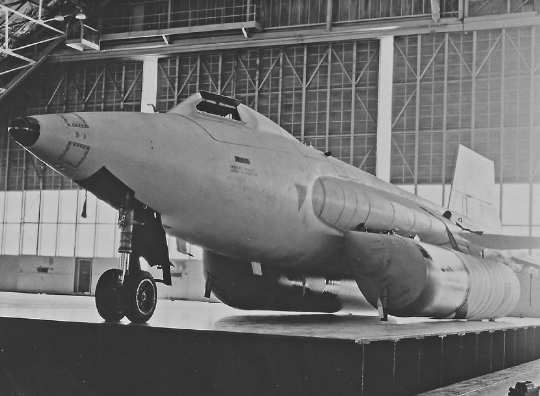 |
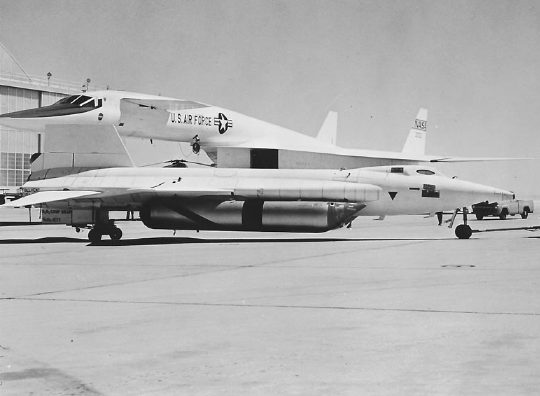 |
|||
The A-2 with external tanks in the Edwards hangar. Neil Stoddard collection |
The A-2 passes in front of the North American Aviation XB-70A. Neil Stoddard collection |
|||
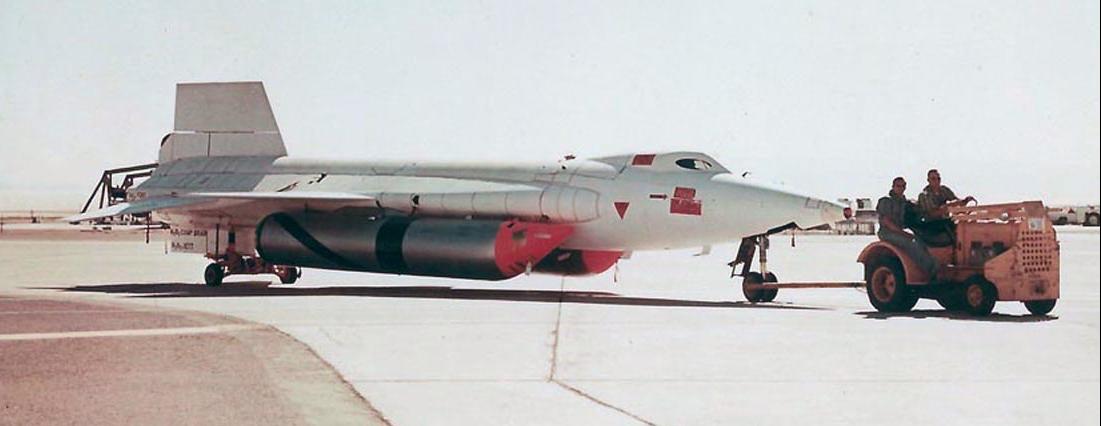 |
||
The complete X-15A-2, with external tanks, is towed out of the hangar, where it will be mounted to the wing pylon of B-52 no. 008. The scramjet was not mounted until after the vehicle was securely in place on the B-52 mothership. Neil Stoddard collection |
||
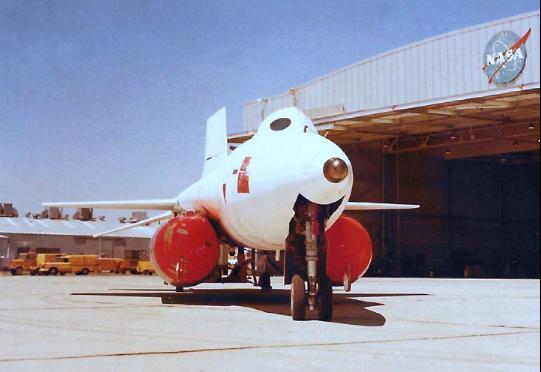 |
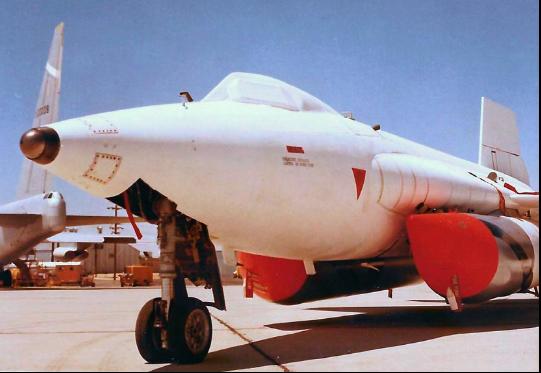 |
|||
Stopping for photos outside the NASA hangar and near the B-52 mothership. Neil Stoddard collection |
||
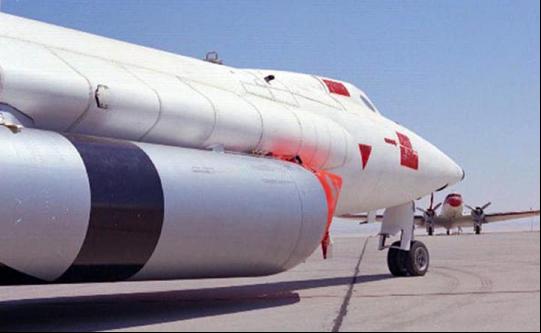 |
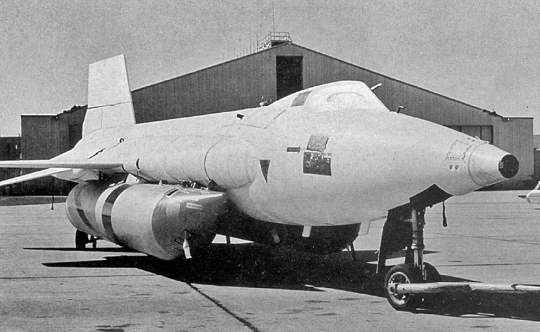 |
|||
Under the nose of the X-15A-2 is the NASA C-47, often called the "Gooney Bird." Armstrong Flight Research Center |
Attached to the tow tractor. Note the "Remove Before Flight" tag on the external tank. TD Barnes collection |
|||
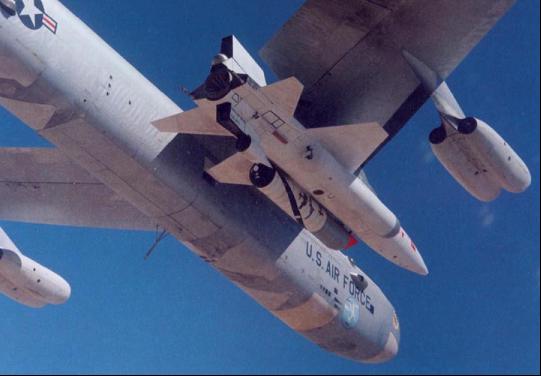 |
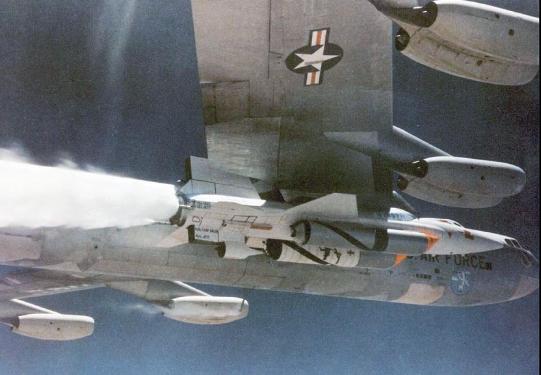 |
|||
Frost buildup on the anhydrous ammonia external tank soon after liftoff on 7 Aug. 1967. Armstrong Flight Research Center |
Pete checks the jettison system of the A-2 on captive flight 2-C-93 on 7 Aug. 1967. Armstrong Flight Research Center |
|||
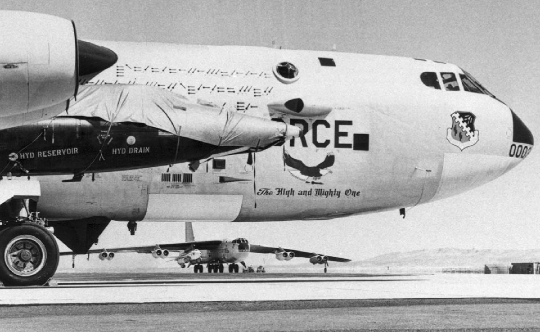 |
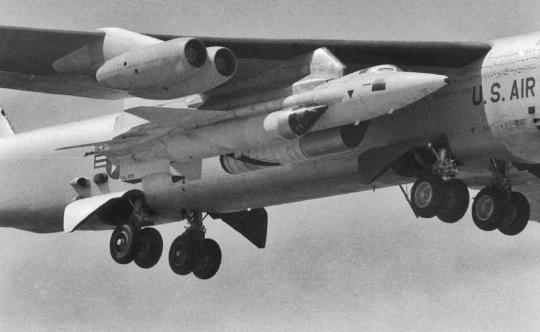 |
|||
On the morning of 3 Oct. 1967, X-15 no. 3 is mounted to the pylon of B-52 no. 003, with a tarp across the cockpit to protect it from the desert sun. Bill Dana will fly this vehicle the following day. In the background, B-52 no. 008 with the X-15A-2 and pilot Pete Knight is taxiing toward the runway for takeoff on Mission 2-53-97. Armstrong Flight Research Center |
B-52 no. 008 takes to the air at 13:31 on 3 Oct. 1967 with Pete Knight at the controls of the X-15A-2. This mission will be the fastest ever achieved by a manned aircraft, topping out at Mach 6.70 or 4,520 mph. No vehicle with a pilot has ever come close to breaking this record after more than half a century. Armstrong Flight Research Center |
|||
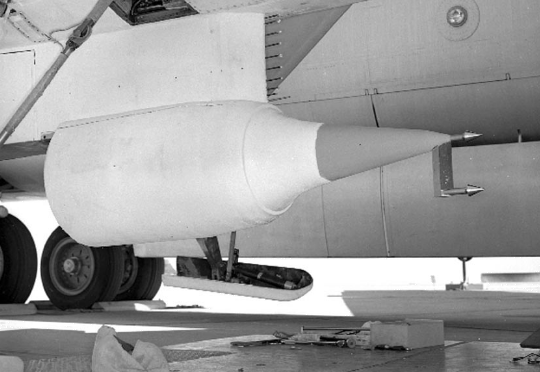 |
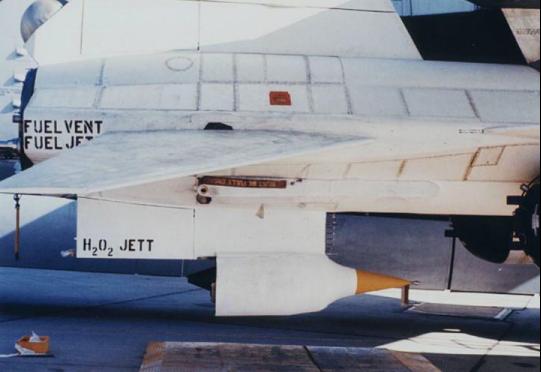 |
|||
The scramjet in place. In the left photo note that the landing skids have not yet been stowed, but are in the stowed position in the right hand image. Armstrong Flight Research Center |
||
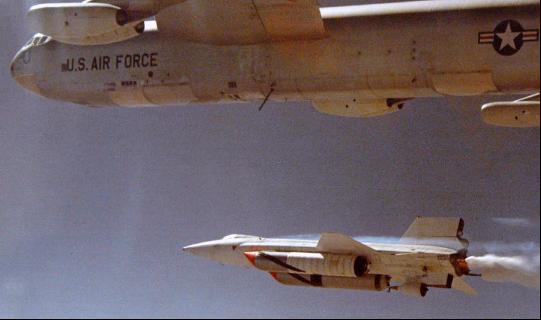 |
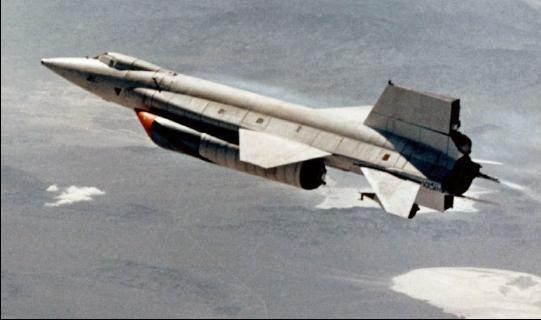 |
|||
Knight drops away and ignites the LR-99 for his speed run. Edwards History Office |
The X-15A-2 accelerates upward to 102,100 feet on mission 2-53-97. Edwards History Office |
|||
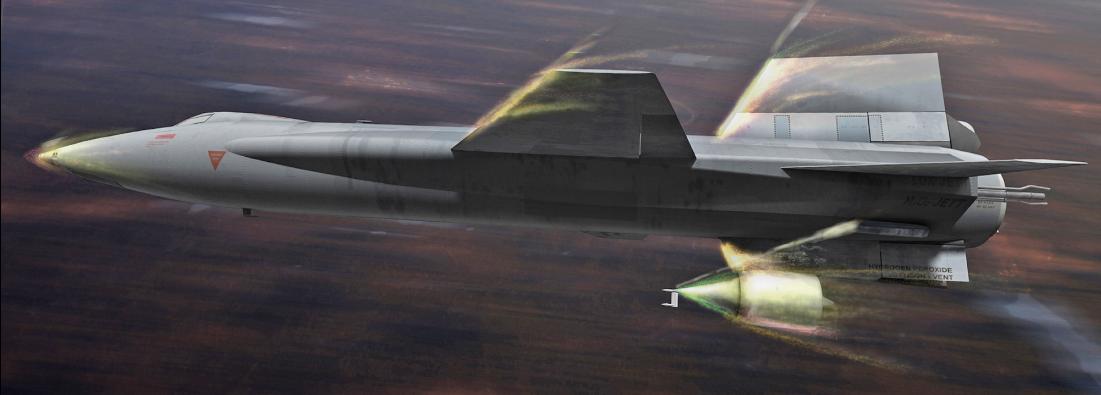 |
||
The X-15A-2 at Mach 6.70 (4,520 mph). The shock waves coming off the dummy scramjet on the lower ventral are aimed directly at the aircraft's engine compartment and will burn through the Inconel-X skin, causing severe damge that nearly destroyed the aircraft. computer art Thommy Eriksson |
||
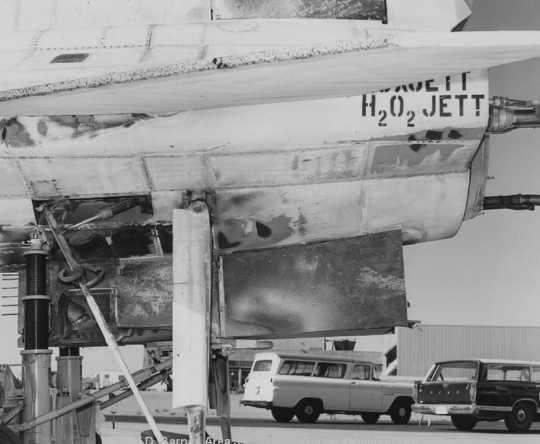 |
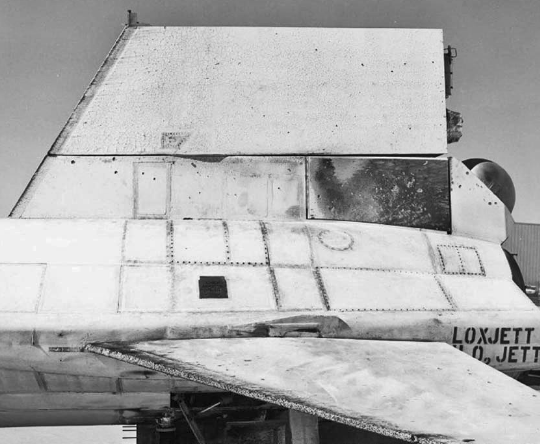 |
|||
The shock wave burn through is evident in this post landing image. This was the final flight of X-15 no. 2, although the damage was repaired by North American Aviation, and the A-2 was returned to NASA at Edwards AFB. Armstrong Flight Research Center |
The upper vertical tail's speed brakes were singed by the heat of high Mach flight. Similarly, the leading edges of the wings and tail surfaces showed excessive erosion, and would have been difficult to maintain between flights. Armstrong Flight Research Center |
|||
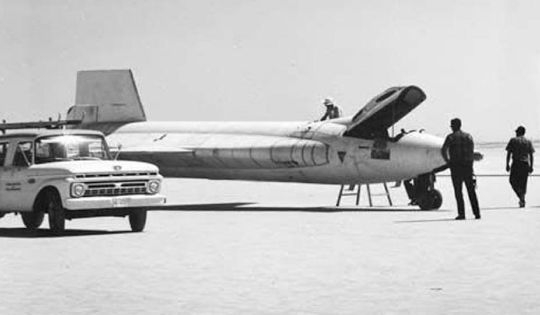 |
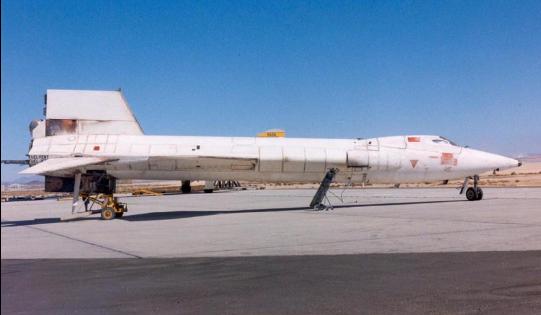 |
|||
Post landing of the X-15A-2 on the lakebed at Rogers Dry Lake. Armstrong Flight Research Center |
Post-flight portrait of the fastest piloted aircraft to ever take to the skies. Armstrong Flight Research Center |
|||